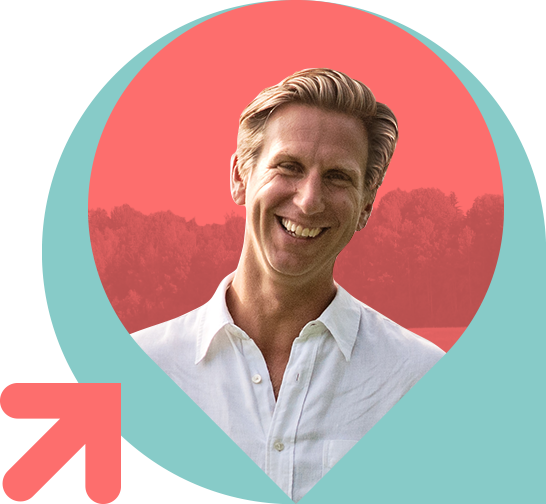Making habits that stick – and the science behind it

If you are facing a set of failed New Year’s resolutions, you are not alone. Around 40% of resolutions are dropped after a month, and the success rate – defined as still present after three years – is a mere 10%. We assume that we are lazy or lack willpower, in fact is more a lack of understanding about where ingrained behaviour comes from and how to change it. Willpower alone is rarely enough, we must take control of the things that control us, and that means understanding them first.
Essentially, whether a wide scale organisational change or a very personal change, changing behaviour is about changing habits. Habits enable our brains to go into autopilot and cope with the vast amount of information coming at us. Reversing the car is in the same category as reaching for the kid’s food. Habits are created without our permission and are stored deep in an ancient part of the brain called the basal ganglia. They are essential for our survival and are set up in a three-part loop.
- Cue: This is what prompts the brain to go into automatic mode. It is often a location or activity, like walking through the door at home, or the alarm clock going off.
- Routine: This is the physical, mental or emotional behaviour that results from the Cue.
- Reward: This is what the behaviour is seeking, and helps the brain figure out if the routine is worth remembering.
Over time, the cue creates an anticipation for the reward (the most famous example is Pavlov’s salivating dogs). If this reward is not achieved, then a craving sets in. The golden rule of habit change is to keep the same cue and reward but change the routine. Interestingly, once cued if we can just distract ourselves with a different routine for three to four minutes, the craving subsides. Going to get a coffee may be seeking a reward as a relief from boredom (cue). We could change the routine to watch a You Tube clip for a few minutes or go and chat to a colleague which results in the same reward (relief from boredom).
So what are the common themes in all theories of change?
- Personal motivation – Why do you really want to make this change? Write a list of all the reasons and keep it handy. This helps you move from contemplation to preparation. Crucially, these are your own personal reasons, not why your partner or friend thinks you need to change. What are the costs to you of not changing? Turn these into positives. Keep going. There are likely to be multiple levels here.
- What exactly do you want to change? Specifically. In a focused way. This needs to move from; a Dream, I want to be healthy; to a Goal, I want to exercise three times per week; to a first step, I will sign up for a class. Ideally these first steps will be matched to you and to what you like doing, not just what others do.
- Turning Accomplices into Friends – Your community has a huge impact on your habits. Certain people trigger smoking in others, or drinking, or overeating. Recruit these accomplices and ask for their help, or if they are threatened by your desire to change, try to reduce contact with them for a while whilst your new behaviour becomes a habit. Ideally practice change with someone else, or at least make yourself accountable by telling people what you are doing.
- Change your environment – Recognise that certain places or associations are cues and trigger a routine. Remove the cookie jar, or even better set up a new positive association. When I walk through the door at home I will go and change, or put my phone away, or talk to my partner instead of heading straight to the drinks’ fridge. Remember that changing your behaviour will change your mind. You are recruiting the habit loop to work for you not against you. Notice that some people use visual cues like a little sticker on their watch. This is to form an association with a positive behaviour. Look at my watch and be reminded to take three deep breaths.
Make it easy – Choose a gym next to work, swap the cookies for rice cakes, investigate using a nicotine patch. Small steps. Going from zero to 100 in a day just is not possible. Small realistic steps add up. Schedule these steps. Stretch while you watch TV? Get up with the alarm? - Reward yourself – Make this fun. If you make it through a week, give yourself something that you enjoy (not what are you trying to change!) Carrots are much more effective than sticks here. Can you gamify the process somehow?
- Track and be interested in the data, not the failures – Some of my clients use a daily check list, others weekly. If you miss a day, then ask why. Look for patterns, look at the data. Willpower is a finite resource that gets used up during the day. Have you relapsed because you were tired at night? Can you save up some willpower during the day? What needs changing? Often nothing, just stick with it. Endless tweaking of your plan makes it harder to stick to sometimes.
- Go for the game-changers – There are certain keystone behaviours that have huge ripple effects. Exercise makes other good habits easier. Eating dinner as a family seems to raise children with better grades, emotional control and confidence. Making your bed in the morning is correlate with better productivity, sense of wellbeing and stronger skills at sticking with a budget!
Embed – Lasting change takes four to six months of action to take hold. At that point you enter the maintenance stage, which can be anything from a few months to a few years to avoid relapse. Be patient with yourself. Doing the same thing, in the same place at the same time will set up a new habit that eventually you will do without thinking, and only then can you tackle the next one!
More Articles
Organisational health - the heartbeat of a business
Organisational health- the heartbeat of a business When we talk about business success, we often look first at strategy; the clever plan, the…
Rituals
Rituals surround us at work, in society and at home. They help manage emotions- think about what happens when someone dies…
How to take the right risks
Individuals and organisations can both benefit from a more entrepreneurial approach. Starting a new business, solving difficult problems…


